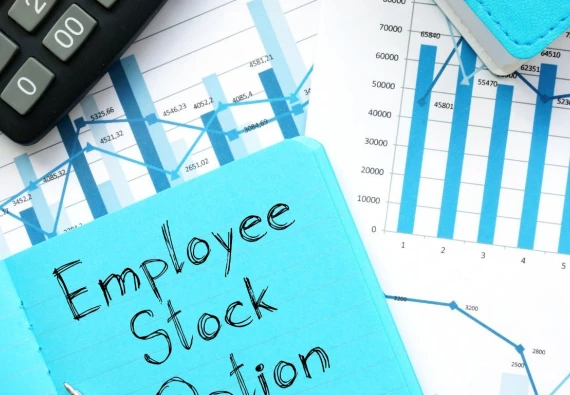This guide to SAFEs covers not only the basic mechanics of SAFEs, but also provides insight into when a SAFE may be a good choice for a startup and when it may be better to use a different financing structure to raise money. Along the way, we break down key differences between SAFEs and convertible notes, as well as differences between SAFEs and priced rounds.
As we’ll see, SAFEs are wonderful tools for early stage startups to raise money. But, as with any tool, if they are misused they can create more harm than good.
- What is a SAFE and How Does it Work?
- What Are the Different Types of SAFEs?
- What Are Pro Rata Side Letters?
- When Should You Use a SAFE and When Should You Not?
- What's the Difference Between a SAFE and a Convertible Note?
- How Industry and Geography May Drive Use of SAFEs vs. Convertible Notes
- What's the Difference Between a SAFE and a Priced Round?
- If SAFEs are Standardized, Does That Mean You Don't Need a Lawyer?

What is a SAFE and How Does it Work?
The Basics
A Simple Agreement for Future Equity (SAFE) is a form agreement introduced in 2013 by the well-known startup accelerator, Y Combinator. Since then, the SAFE has become a popular way (arguably the most popular way) for early stage startups to raise money from investors, particularly in West Coast startup hubs like San Francisco, Seattle, and Los Angeles.
A SAFE is a contract that outlines the terms between a startup and the SAFE investor. In exchange for their investment, the investor is granted the option to purchase preferred shares in the startup when it raises a future priced round (this is the “future equity” referenced in the name of the SAFE). The agreement includes provisions that specify the conditions for converting the invested capital in the SAFE into equity.
The goal for SAFE investors is to have their SAFEs convert into preferred equity when the company raises a priced round, e.g., a Series A. The shares of preferred equity that SAFE investors receive will be the same as those sold to the new investors in the priced round, though SAFE investors may effectively receive a better deal than the new investors if their SAFEs convert at a discount or a valuation cap. These terms are important and subject to negotiation with investors so we take a closer look at each below.
Discount
A discount is meant to compensate investors for the higher risk involved in investing at a very early stage. It gives SAFE investors a percentage discount on the price per share new investors in a priced round will pay for their shares. 10-20% is a common discount range but it can vary.
Example: If a SAFE investor has a 20% discount and the new investors purchase preferred shares at $5 per share, the SAFE investor would only pay $4 per share. This gives the SAFE investor greater purchasing power with the amount they invested in the SAFE.
It is less common for SAFEs to have only a discount than to have only a valuation cap. Discount only SAFEs tend to be seen as company-friendly. And many investors refuse to invest in a SAFE without a valuation cap (unless the startup has lots of leverage). So odds are good you will have to deal with valuation caps.
Valuation Cap
The valuation cap is where most of the negotiation occurs between founders and investors. Like the discount, the valuation cap is meant to compensate investors for the risk they take in investing at an early stage. Unlike the discount, though, a valuation cap effectively sets a ceiling at which SAFEs will convert into equity. An example helps illustrate this.
Example: If a SAFE had a $5 million valuation cap and the startup then raised a Series A round at a $10 million valuation, the price per share for the SAFE investor would be determined using the $5 million cap, rather than the price per share paid by the investors. There’s some math involved here (the formula is in the SAFE), but in this scenario, the price per share for the SAFE investors would likely be around half of the price per share for the new investors. Put differently, the cap would function like a whopping 50% discount!
The above example illustrates the risk to startups of raising with a low valuation cap. If the valuation of the next priced round significantly exceeds the valuation cap, the SAFE investors are effectively getting discounts that no startup would ever agree to in a discount only SAFE. This can unreasonably skew ownership in favor of early investors to a degree that’s disproportionate to their investment. Put more plainly, they’re rewarded too handsomely for their willingness to invest at an early stage.
So, how to avoid this? Founders should think about the valuation cap relative to the expected valuation of the company at its next priced round. So if the company plans to raise a $5 million priced round at a $25 million post-money valuation, it would not be wise to sell SAFEs with a $5 million cap. However, if a company instead planned to raise a $1 million priced round at a $6 million post-money valuation, then it would be perfectly reasonable to sell SAFEs with a $5 million cap. In short, valuation caps should be viewed as a hedge to secure both the company’s and the investor’s expected valuation at the next priced round, and not merely as a windfall for investors.
Tip: Using staggered valuation caps can help drive investors to commit earlier or a larger amount than they otherwise might in order to get a more favorable valuation cap than investors who come in later or at smaller amounts.
What Happens to the SAFEs if There Isn't a Priced Round?
If the startup doesn’t raise a qualifying priced round (defined as “Equity Financing” in the SAFE), then the SAFEs don’t convert. A company could sell SAFEs and theoretically continue operating indefinitely without the SAFEs converting if no such priced round takes place. Of course, most startups that fail to raise a priced round are either going to have to shut down or be acquired.
In either event, the SAFE investors will have priority in line over the founders and other common stockholders (e.g., employees, advisors, etc.) to receive their investment dollars back, which is known as a liquidation preference. If the startup is acquired for a meaningful amount, the SAFE investors may be entitled to receive more than their original investment amount. In reality, though, usually SAFE investors will be fortunate to recoup their investment if there’s a dissolution or an acquisition.
A final clarifying point on discounts and caps: investors do not get to apply both the discount and the valuation cap if both are present in their SAFE. Instead, they choose the mechanism that results in the best conversion economics (i.e., the lowest price per share) for them when their SAFE converts into equity.
What Are the Different Types of SAFEs?
Pre-Money vs. Post-Money SAFEs
One key difference in SAFE structures is the pre-money SAFE vs. the post-money SAFE. Prior to 2018, the standard SAFE was what we now call a “pre-money SAFE.” In 2018, Y Combinator changed the standard SAFE structure to what we now call a “post-money SAFE.” On its face, this change seemed relatively harmless. But as we’ll see below, the post-money SAFE can do much more damage to founder equity than pre-money SAFEs.
With pre-money SAFEs, each time a new SAFE is issued it dilutes the ownership percentage for the founders and all the other SAFE holders. Neither the founders nor the SAFE investors know what percentage of the startup the SAFE investors will own until the SAFEs convert at the next financing round.
With post-money SAFEs, on the other hand, each time a new SAFE is issued it dilutes only the ownership percentage for the founders–not the other SAFE holders. The stated reason for changing to the post-money SAFE was to make it easier for investors to know what ownership stake their investment is buying when the SAFE converts into equity.
Tip: You can tell whether a SAFE is pre-money or post-money by looking at the definition of “Company Capitalization.” If that definition excludes SAFEs and convertible notes from the calculation of Company Capitalization, then it’s a pre-money SAFE. If it includes them, then it’s a post-money SAFE.
It’s true that the post-money SAFE makes it easier for investors to know what they’re getting as far as ownership percentage. But this clarity can come at a high cost for founders, especially those who raise multiple rounds of SAFEs. This is because when post-money SAFEs convert, none of them affect the other SAFEs, meaning the ownership percentage implied by the SAFE economics stays locked in for each SAFE independent of the rest. Put more plainly, post-money SAFEs only dilute founders, not other SAFE investors.
Example: A SAFE investor puts in $1 million on a post-money SAFE. The valuation cap on this SAFE is $5 million. The investor has effectively bought a 20% ownership stake in the startup. Let’s say a year later the same startup raises another $2 million on a post-money SAFE with a $10 million valuation cap from a different investor. The startup has now sold another 20% stake in the startup. But the first SAFE investor’s 20% isn’t diluted by this new 20% investment–instead, the founders absorb all of that dilution.
Note: The 20% ownership stake in the above example is the SAFE investor’s ownership in the startup immediately prior to the closing of a priced equity round. As discussed, SAFE investors won’t be diluted by each other with the post-money SAFE, but everyone (founders and SAFE investors, most notably) will be diluted by future investors in a priced round.
Post-money SAFEs are more commonly used now than pre-money SAFEs. However, startups don’t have to accept the post-money SAFE by default. If a startup has good reason not to use the post-money SAFE (e.g., the founders expect to raise multiple SAFE rounds before a priced round), it should consider proposing a pre-money SAFE to investors instead. But if you end up using the post-money SAFE, it’s critical to understand the dilutive impact of continuing to sell these SAFEs.
Current Post-Money SAFEs
Currently, there are three types of post-money SAFEs listed on Y Combinator’’s website:
- Valuation cap only. This SAFE version contains a post-money valuation cap only with no discount. This is the most commonly used version. Investors will often insist on having a valuation cap.
- Discount only. This SAFE version contains a discount only with no valuation cap. This is less commonly used than the valuation cap only SAFE. It’s seen as more founder-friendly.
- Most favored nation (MFN). This SAFE version has no valuation cap or discount. Instead, it gives the investor the right to elect to receive the most favorable terms given to future SAFE investors. So, for instance, if a future SAFE investor gets a $5 million valuation cap, the MFN SAFE investor may elect to get the same cap, after which the MFN provision goes away and the investor receives a SAFE with a $5 million valuation cap.
Note, too, that there is a version of the post-money SAFE with both a valuation cap and a discount that can be found online, despite no longer being listed on Y Combinator’s website. The way this SAFE works is that the investor gets to choose between converting at the discount or converting at the valuation cap. So the investor will choose the one that yields a better economic outcome.
What Are Pro Rata Side Letters?
Y Combinator has a “Pro Rata Side Letter” listed on its website. This is an optional side letter agreement startups can use with certain SAFE investors. The side letter gives an investor pro rata rights in the next financing, meaning the investor can buy a certain percentage of the total round in the next financing. The purpose of this is to give certain SAFE investors the opportunity to limit their dilution in the next financing by buying more shares in the company.
The best practice with pro rata side letters is to limit them only to SAFE investors who invest an amount above a certain threshold (generally at least $100,000, sometimes more). If pro rata rights are given to all investors, it can be challenging to allocate sufficient space to bring in new investors in the priced round if all your SAFE investors want to continue investing. While this may not sound so bad, it can be frustrating if there are better opportunities with more high profile investors for your next priced round. Alternatively, if your SAFE investors don’t want to exercise their pro rata rights, you’ll still have to track them down to find out whether they plan to exercise or waive their rights.
Strategically, setting a threshold for pro rata rights can also help drive investors to commit more money (or commit earlier) in order to unlock pro rata rights. This is an undervalued form of leverage that more founders can take advantage of.
When Should You Use a SAFE and When Should You Not?
The rise of the SAFE in popularity has unfortunately not seen a corresponding increase in understanding by founders of the pros and cons of using this tool. More and more startups founders reflexively use the SAFE because they want to get money in quickly and with lower legal fees. This kind of short term thinking can have long term consequences.
When to Use SAFEs
The main virtues of SAFEs are that they’re relatively fast and inexpensive. In effect, they allow the company and investors to defer much of the intensive structuring and negotiating terms to the next equity financing. As you would expect, they tend to be most useful when the startup is raising money for the first time and needs to get that money quickly in order to start growing.
Another convenient feature of SAFEs is that it’s easier to sell SAFEs on a rolling basis, meaning that the company doesn’t have to have all of its investors lined up before it can close the financing. For instance, a startup could sell a $100,000 SAFE to Investor A in March, sell a $50,000 SAFE to Investor B in April, and sell a $75,000 SAFE to Investor C in May. Wrangling investors to close simultaneously can take a lot of time and effort, and the SAFE can allow startups to sidestep this hurdle.
When to Avoid SAFEs
The simplest answer here is to avoid using SAFEs when you’ve already used them before. That’s not a hard and fast rule. There may be good reasons to raise multiple SAFE rounds. But one of the most consistent mistakes we see with SAFEs is repetitive use by founders without understanding the implications to their cap table when the SAFEs convert.
All it takes is some basic cap table modeling to see just how much dilution the founders may experience by raising multiple SAFE rounds. But many founders never do this modeling because the convenience of the SAFE can override their instinct to model scenarios with their lawyer. They want to keep selling SAFEs and keep the money spigot turned on. But it can get very, very ugly for the founders when multiple rounds of SAFEs convert, especially when using post-money SAFEs. As we know with post-money SAFEs, founders absorb all dilution from subsequent SAFE rounds, rather than dilution being shared among the SAFE investors.
A related situation where using SAFEs may not be prudent is when a startup has a lead investor, is raising a substantial amount from investors, and can agree on a reasonable valuation for the financing. In that scenario, it very likely makes more sense to go through the additional time and expense to price the round. Doing so locks in these reasonable terms for both the startup and the investors, rather than pushing it out into the unknown future.
Carta data from 2023-2024 show that a round is more likely to be priced once it reaches $3 million or more, though even at that amount and above SAFEs are still being used.
What's the Difference Between a SAFE and a Convertible Note?
SAFEs and convertible notes are similar in the sense that they both allow startups and investors to defer valuing the company, and they both tend to be faster and cheaper to close than a priced round. SAFEs are usually even faster and cheaper to close than convertible notes, as there’s been more standardization with the SAFE than with convertible note templates, but the differences here are likely not significant.
Related Post: The Ultimate Guide to Convertible Notes for Startups
The big difference between convertible notes and SAFEs is that convertible notes are debt, while SAFEs are not. As debt instruments, convertible notes have an interest rate and a maturity date, i.e., a date on which the principal investment amount plus interest must be repaid.
It should be mentioned that the goal for convertible note holders is for their debt to convert into equity prior to the maturity date. In that sense, their goals are the same as SAFE holders. Everyone is aiming for that next priced round where they can finally convert into preferred equity. But the presence of the maturity date gives convertible note holders more leverage than SAFE holders. If a startup fails to raise a priced round prior to the maturity date, the convertible note holders could force the company to repay the principal and interest. Early stage startups don’t hold onto excess cash, and so this could effectively bankrupt the company. Since that wouldn’t serve the interests of convertible note holders, a more likely scenario is for convertible note holders to use the threat of the maturity date to negotiate more favorable terms for themselves in exchange for pushing out the maturity date.
Convertible notes also sit higher in the liquidation stack than SAFEs do. This is again because convertible notes are debt, and debt gets paid before equity (SAFEs are treated as preferred equity for this purpose).
All other things being equal, SAFEs are more startup-friendly than convertible notes. But convertible notes are not necessarily a bad option for startups to consider, particularly if investors insist on their use. What’s most important with either type of convertible instrument, be it a SAFE or a note, is that the core terms be reasonable.
How Industry and Geography May Drive Use of SAFEs vs. Convertible Notes
Based on 2023 data from CARTA, whether a company raises money using SAFEs or convertible notes may depend, at least in part, on that startup's industry.
(Chart from Carta Data Minute, dated June 15, 2023)
The CARTA data show that certain industries like medical devices, hardware, and biotech favor convertible notes, while software-based industries favor SAFEs.
In addition to industry, geography plays a role. Startups hubs like Silicon Valley/Bay Area, New York, and Seattle are more likely to adopt SAFEs than regions with less startup activity, which tends to favor convertible notes.
There could be a few reasons to help explain these differences. Investors (and their lawyers) in industries like hardware and biotech, for example, may be more familiar with the concept of convertible notes. These investors may also have a lower risk tolerance than software investors in startup hubs where risk taking is more promoted. Also, the SAFE was created by Y Combinator, a startup accelerator that disproportionally funds software in coastal startup hubs, areas where SAFEs are more prevalent. Finally, industries like hardware and biotech are typically more capital-intensive with business assets that are more likely to be tangible and able to be sold in a liquidation than SaaS software companies, which contributes to favoring convertible notes over SAFEs.
These factors serve as a reminder that while a startup may have a preference for, say, using SAFEs, they should also be aware of what type of investment instrument their target investors will expect to see and be prepared to adapt as needed.
What's the Difference Between a SAFE and a Priced Round?
The technical difference between a SAFE and priced round is the time at which the startup gets valued. In a SAFE financing, the company and the investors defer valuation of a startup until a priced round. In a priced round, the company and the investors actually set the valuation of the startup and the company sells preferred shares to investors at a fixed price per share based on that valuation.
Related Post: The Ultimate Guide to Raising a Priced Round
As such, using SAFEs effectively allows the company and investors to defer much of the intensive structuring and negotiating terms for selling preferred shares in a priced round, as well as due diligence. And so the main difference between selling SAFEs and selling preferred shares in a priced round is that with the latter, you’re now having to commit to the sometimes laborious and inevitably more costly process of pricing the round and everything that goes into that.
What are you getting in return for this? Well, ideally you’re getting access to greater amounts of capital and from more prominent investors. That kind of capital from those kinds of investors will insist on crystal clarity surrounding their ownership stake, their rights, and their protections. They’ll also want to vet the company carefully to ensure they’re money is going toward building on a solid foundation.
What does this mean in plain terms? Mostly it means many more pages of documentation and much more vetting of the company via due diligence. The agreements for a Series A will easily be more than 10 times the length of the SAFE. And investors in a Series A will almost certainly take a much closer look at the company’s operational history, corporate governance, securities compliance, IP ownership, and much, much more in due diligence. The diligence done in early stage SAFE financings is often orders of magnitude less than at a proper priced round.
Given the more intensive process, priced rounds typically occur only after a startup has established some market validation and track record of revenue and growth.
If SAFEs Are Standardized, Does That Mean You Don't Need a Lawyer?
It’s true that SAFEs are mostly standardized. But the provisions that are not standardized, e.g., discounts and valuation caps, do–as we’ve seen–still require a deep understanding of the fundraising process and effects on founder dilution to negotiate effectively, which competent startup lawyers have. Moreover, some SAFEs (especially with larger investors) come with side letters that may include customized terms (sometimes overreaching and onerous) that may require a lawyer to negotiate. Also, the decision of whether to use a SAFE in the first place may well require experienced counsel.
Apart from these things, you’ll still need to ensure the SAFE financing is done consistent with corporate governance requirements and in compliance with securities laws. For example, the financing will need to be approved by the company’s board of directors and the company will need to perfect a securities exemption, both state and federal, for the SAFE offering, e.g., Rule 506(b).
Related Post: Securities Law for Startups: The Basics
SAFEs don’t eliminate the need for lawyers. When used effectively, they reduce the need for lawyer involvement in the fundraising process.
Takeaways
The standardization movement with SAFEs is admirable and has likely been a net positive for startups and their founders in early stage fundraising efforts. But there are hidden costs and traps for the unwary with SAFEs. The fact that the form of a SAFE is considered “standard” does not mean that it is prudent to use it in any circumstance.
So, the main takeaway is the importance of understanding when and why to use the SAFE, rather than simply rejoicing at the prospect of raising money on the cheap. Doing this can prove to be very expensive in the long run.
You can find all of the current versions of the post-money SAFEs, the pro rata side letter, and a SAFE user guide on YC’s website.





